FMS FMM129P Bedienungsanleitung
- Kategorie
- Ferngesteuertes Spielzeug
- Typ
- Bedienungsanleitung

SIMPLE STABLERIGID
FMSMODEL.COM
2500mm ASW-17
Manuel d’utilisation
Instruction Manual
Bedienungsanleitung
操作手册
SIMPLE ASSEMBLY STRONG DURABLE EPO SMOOTH FLYING PERFORMANCE

WARNING: Read the ENTIRE instruction manual to become familiar with the features of the product before operating.
Failure to operate the product correctly can result in damage to the product,personal property and cause serious injury.
This is a sophisticated hobby product and NOT a toy. It must be operated with caution and common sense and failure to do so
could result in injury or damage to the product or other property. This product is not intended for use by children without direct
adult supervision.
This manual contains instructions for safety operation and maintenance. It is essential to read and follow all the instructions and
warnings in the manual prior to assembly, setup or use, in order to operate and avoid damage or serious injury.
WARNING
As the user of this product, you are solely responsible for operating in a manner that does not endanger yourself and others or
result in damage to the product or the property of others. This model is controlled by a radio signal subject to interference from
many sources outside your control. This interference can cause momentary loss of control so it is advisable to always keep a
safe distance in all directions around your model, as this margin will help avoid collisions or injury.
Age Recommendation: Not for children under 14 years. This is not a toy.
·Never operate your model with low transmitter batteries.
·Always operate your model in an open area away from cars, traffic or people.
·Avoid operating your model in the street where injury or damage can occur.
·Never operate the model in populated areas for any reason.
·Carefully follow the directions and warnings for this and any optional support equipment you use (chargers,rechargeable
battery packs, etc.)
·Keep all chemicals, small parts and anything electrical out of the reach of children.
·Moisture causes damage to electronics. Avoid water exposure to all equipment not specifically designed and protected for this
purpose.
·Never lick or any place of any your model in your mouth as it could cause serious injury or even death.
Lithium Polymer (Li-Po) Battery Warning
CAUTION: Always follow the manufacturer’s instructions for safe use and disposal of batteries. Fire, property
damage, or serious injury can result from the mishandling of Li-Po batteries.
By handling, charging or using a Li-Po Battery you assume all risks associated with lithium batteries.
If at any time the batteries begin to swell or balloon, discontinue use immediately!
Always store the batteries at room temperature in a dry area to extend the life of the battery. Always transport
or temporarily store the battery in a temperature range of 40-120F. Do not store the battery or model in a car or in direct sunlight.
If stored in a hot car, the battery can be damaged or even catch fire.
Never use a Ni-Mh Charger to charge Li-Po Batteries. Failure to charge the battery with a Li-Po compatible charger
may cause fire resulting in personal injury and property damage.
Never discharge Li-Po Cells below 3V.
Never leave charging batteries unattended.
Never charge damaged batteries.
Charging the Flight Battery Warning
Use a battery charger that is designed to safely charge the Li-Po Battery. Read the charger instructions care
fully before use. When charging the battery, make certain the battery is on a heat resistant surface. It is also highly
recommended to place the Li-Po Battery inside a fire resistant charging bag readily available at hobby shops or
online.
p w
2

3
Before assembly, please inspect the contents of the kit. The
photo below details the contents of the kit with labels. If any
parts are missing or defective, please identify the name or
part number (refer to the spare parts list near the end of the
manual) then contact your local shop or email us: support
Kit contents
Table of contents
Introduction
Wingspan: 2500mm /98.4 in
Overall Length: 1390mm /54.7 in
Flying Weight: 2350g
Motor Size: 3541 KV750
Wing Load: 45.7g/dm² (0.09oz/in²)
Wing Area: 50.3 dm² (779.5 sq.in)
ESC: 40A
Servo: 17g*4pcs, 9g*2pcs
Recommended Battery: 14.8V 2200mAh-2600mAh 35c
Specifications
@fmsmodel.com
A:Fuselage C:Horizontal stabilizer E:Wing halves
B:Rudder D:Wing spar joiner F:Pushrods
A. B.
F.
C.
D.
E.
Features
• Predator 3541 motor and 40A ESC
• Snap together assembly, no glue necessary
• Two piece wing
• Functional flaps
• Fold away high efficiency propeller
• Made of highly durable EPO
FMS is proud to announce the brand-new 2500mm ASW-17!
True to the FMS spirit, no detail was overlooked in the design of
the ASW-17. The FMS engineers made 4 expensive tooling
adjustments just to micro-adjust the airfoil for perfect efficiency.
The wing, vertical and horizontal stabilizers are designed with a
snap-together structure. With a simple snap, the surfaces attach
to the fuselage with pinpoint precision- no screws or glue neces-
sary! Build the aircraft in as little as 3 minutes!
Like the 3000mm Fox, the ASW-17 has a pre-installed carbon
fiber spar that ensures wing rigidity in high-G maneuvers.
To achieve the same dihedral as the real aircraft, the ASW-17
was designed with a specialized CNC aluminum spar joiner-
allowing the aircraft to maintain its wing geometry during
demanding flight routines.
Performance-wise, a high-quality Hobbywing 40A ESC paired
with a Predator 3541-750KV motor provides ample power with a
4S pack to perform most aerobatic maneuvers.
If efficiency, stability and aerobatic capabilities are what you
seek in a glider, look no further than the FMS 2500mm ASW-17!
Introduction
Kit contents
Model assembly
Battery installation
Receiver diagram
Get your model ready to fly
Clevis installation
Control horn and servo arm settings
Center of gravity(CG)
Before flying the model
Flying course
Troubleshooting
Spare parts list content
3
3
4
6
6
6
8
8
8
9
9
10
10
User Manual of Brushless Speed Controller 11

4
Model assembly
Installation of the vertical and horizontal stabilizers
Installation of the pushrods
1.The rudder snaps on to the vertical stabilizer with an
audible “click”.
2.Slide the horizontal stabilizer onto the vertical stabi-
lizer.
1.With the rudder servo at its neutral position, connect
the pushrod to the rudder and secure using a hex-key.
NOTE: Gently pull on the rudder to ensure that the
control surface has been properly installed.
NOTE: Gently pull on the horizontal stabilizer to
ensure that the stabilizer has been properly installed.

5
Model assembly
Wing installation
2.With the elevator servo at its neutral position, con-
nect the pushrod to the elevator and secure using a
hex key.
1.Rotate the threaded end of the spar into the fuse-
lage in the direction as shown, then use the included
metal key to tighten.
2.Slide the wing halves onto the fuselage until an
audible “Click” is heard.
NOTE: Check that the connectors have been
securely fastened onto the fuselage.

Important ESC and model information
The ESC included with the model has a safe start. If the motor battery is connected to the ESC and the throttle stick is not in
the low throttle or off position, the motor will not start until the throttle stick is moved to the low throttle or off position. Once the
throttle stick is moved to the low throttle or off position, the motor will emit a series of beeps. Several beeps with the same tune
means the ESC has detected the cells of the battery. The count of the beeps equals the cells of the battery. The motor is now
armed and will start when the throttle is moved.
The motor and ESC come pre-connected and the motor rotation should be correct. If for any reason the motor is rotating in the
wrong direction, simply reverse two of the three motor wires to change the direction of rotation.
The motor has an optional brake setting. The ESC comes with brake switched off and we recommend that the model be flown
with the brake off. However, the brake could be accidentally switched on if the motor battery is connected to the ESC while the
throttle stick is set at full throttle. To switch the brake off, move the throttle stick to full throttle and plug in the motor battery. The
motor will beep one time. Move the throttle stick to low throttle or the off position. The motor is ready to run and the brake will
be switched off.
Battery Selection and Installation. We recommend the 14.8V 2200mAh-2600mAh 35c Li-Po battery. If using another battery,
the battery must be at least a 14.8V 2200mAh-2600mAh 35c battery. Your battery should be approximately the same capacity,
dimension and weight as the 14.8V 2200mAh-2600mAh 35c Li-Po battery to fit the fuselage without changing the center of
gravity significantly.
1.
2.
3.
4.
6
1.Pull back on the latch and remove the battery hatch.
2.Apply the hook tape to the cable end of the battery.
3.Slide the full charged battery into the battery compartment
with the power supply cable toward the rear end of the plane.
Note: The center of gravity can be adjusted by moving the
battery forward or aft.Having the correct center of gravity is
critical to achieving proper flight characteristics.
Battery installation
Receiver diagram
Get your model ready to fly
The cables from the servo connector board should be
connected to your receiver in the order shown. Note that the
LEDs can be powered by any spare channel on the receiver.
Tuck the wire leads into the recessed cavity towards the rear
of the battery hatch.
Spare
Gear
Rudder
Throttle
EIevator
Aileron
Channel-1
Aile
Channel-2
Elev
Channel-3
Thro
Channel-4
Rudd
Channel-5
Gear
Channel-6
Spare
6
5
4
3
2
1
Note: For aircraft equipped with flaps, please connect the
flap servos to CH 6. LED lights can be plugged into any
spare channel.

Transmitter and model setup
Before getting started, bind your receiver with your transmitter.
Please refer to your transmitter manual for proper operation.
CAUTION: To prevent personal injury, DO NOT install the propel-
ler assembly onto the motor shaft while testing the control surfac-
es. DO NOT arm the ESC and do not turn on the transmitter until
the Transmitter Manual instructs you to do so.
Tips: Make sure all control sticks on your radio are in the neutral
position (rudder, elevator, ailerons) and the throttle is in the OFF
position. Make sure both ailerons move up and down (travel) the
same amount. This model tracks well when the left and right
ailerons travel the same amount in response to the control stick.
Move the controls on the transmitter to make sure the aircraft
control surface moves correctly. See diagrams right.
7
Control throws
The suggested control throw setting for the ASW-17 are as follows (dual rate setting):
Tips: On the first flight, fly the model in low rate.
The first time you use high rates,be sure to fly at
low to medium speeds. High rate, as listed, is
only for EXTREME maneuvering.
Aileron
Bank left
Bank right
Elevator
Climb
Descend
Steering Rudder
Steer left
Steer right
14mm up / dowm 10mm up / dowm
12mm up / dowm
12mm left / right
16mm up / dowm
16mm left / right

8
More control throw
Less control throw
Horns Arms
a.
b.
c.
d.
e.
f.
Clevis installation
1.Pull the tube from the clevis to the linkage.
2.Carefully spread the clevis, then insert the clevis pin into the
desired hole in the control horn.
3.Move the tube to hold the clevis on the control horn.
Control horn and servo arm settings
The table shows the factory settings for the control horns
and servo arms. Fly the aircraft at the factory settings
before making changes.
After flying,you may choose to adjust the linkage positions
for the desired control response.
ElevatorRudderAilerons
Check the C.G. (Center of gravity)
When balancing your model, adjust the battery as necessary
so the model is level or slightly nose down. This is the correct
balance point for your model. After the first flight, the CG
position can be adjusted for your personal preference.
1. The recommended Center of Gravity (CG) location for your
model is(70-80mm) from the leading edge of the main wing
(as shown) with the battery pack installed. Mark the location of
the CG on top of the wing.
2. When balancing your model, support the plane at the marks
made on the bottom of the main wing with your fingers or a
commercially available balancing stand. This is the correct
balance point for your model. Make sure the model is assembled
and ready for flight before balancing.
70-80mm

Take off
Maintenance
Landing
Find a suitable flying site
Perform the range check for your plane
Monitor your flight time
Find a flying site clear of buildings, trees, power lines and
other obstructions. Until you know how much area will be
required and have mastered flying your plane in confined
spaces, choose a site which is at least the size of two to three
football fields - a flying field specifically for R/C planes is best.
Never fly near people - especially children, who can wander
unpredictably.
As a precaution, an operational ground range test should be
performed before the first flight each time you go out.
Performing a range test is a good way to detect problems
that could cause loss of control such as low batteries, defective
or damaged radio components, or radio interference. This
usually requires an assistant and should be done at the actual
flying site you will be using.
First turn on the transmitter, then install a fully-charged battery
into the fuselage. Connect the battery and install the hatch.
Remember, use care not to bump the throttle stick. Otherwise,
the propeller/fan will turn and possibly cause damage or injury.
Note: Please refer to your Transmitter Manual that came with
your radio control system to perform a ground range check. If
the controls are not working correctly or if anything seems
wrong, do not fly the model until you correct the problem. Make
certain all the servo wires are securely connected to the
receiver and the transmitter batteries have a good connection.
Monitor and limit your flight time using a timer (such as on a
wristwatch or in your transmitter if available). When the
batteries are getting low you will usually notice a performance
drop before the ESC cuts off motor power, so when the plane
starts flying slower you should land. Often (but not always)
power can be briefly restored after the motor cuts off by
holding the throttle stick all the way down for a few seconds.
To avoid an unexpected dead-stick landing on your first flight,
set your timer to a conservative 4 minutes. When your alarm
sounds you should land right away.
9
Before flying the model
Flying course
While applying power, slowly steer to keep the model straight.
The model should accelerate quickly. As the model gains flight
speed you will want to climb at a steady and even rate. It will
climb out at a nice angle of attack (AOA).
Flying
Always choose a wide-open space for flying your plane. It is
ideal for you to fly at a sanctioned flying field. If you are not
flying at an approved site always avoid flying near houses,
trees, wires and buildings. You should also be careful to avoid
flying in areas where there are many people, such as busy
parks, schoolyards, or soccer fields. Consult laws and
ordinances before choosing a location to fly your aircraft. After
takeoff, gain some altitude. Climb to a safe height before trying
technical manoeuvres, including high speed passes, inverted
flight, loops, and point rolls.
Land the model when you hear the motor pulsing (LVC) or if
you notice a reduction in power. If using a transmitter with a
timer, set the timer so you have enough flight time to make
several landing approaches.
The model’s three point landing gear allows the model to land
on hard surfaces. Align model directly into the wind and fly
down to the ground. Fly the airplane down to the ground using
1/4-1/3 throttle to keep enough energy for proper flare. Before
the model touches down, always fully decrease the throttle to
avoid damaging the propeller or other components. The key to
a great landing is to manage the power and elevator all the
way to the ground and set down lightly on the main landing
gear. After a few flights you will find the model can be set down
lightlyon the mains and you can hold the nose wheel off
balancing themodel on the mains until it slows and gently
settles the nose.
Repairs to the foam should be made with foam safe adhesives
such as hot glue, foam safe CA, and 5min epoxy. When parts
are not repairable, see the Spare Parts List for ordering by item
number.
Always check to make sure all screws on the aircraft are
tightened. Pay special attention to make sure the spinner is
firmly in place before every flight.

10
Trouble shooting
Problem Possible Cause Solution
Aircraft will not respond to
the throttlebut responds to
other controls.
-ESC is not armed.
-Throttle channel is reversed.
-Lower throttle stick and throttle trim to lowest settings.
-Reverse throttle channel on transmitter.
Extra propeller noise or
extra vibration.
-Damaged spinner, propeller,
motor or motor mount.
-Loose propeller and spinner parts.
-Propellor installed backwards.
-Replace damaged parts.
-Tighten parts for propeller adapter, propeller and spinner.
-Remove and install propeller correctly.
Reduced flight time or
aircraft underpowered.
-Flight battery charge is low.
-propeller installed backward.
-Flight battery damaged.
-Completely recharge flight battery.
-Replace flight battery and follow flight battery
instructions.
Control surface does not
move, or is slow to respond
to control inputs.
-Control surface, control horn,
linkage or servo damage.
-Wire damaged or connections
loose.
-Replace or repair damaged parts and adjust controls.
-Do a check of connections for loose wiring.
Controls reversed.
Channels are reversed in the
transmitter.
Do the control direction test and adjust controls for
aircraft and transmitter.
-Motor loses power
-Motor power pulses then
motor loses power.
-Damage to motor, or battery.
-Loss of power to aircraft.
-ESC uses default soft Low Voltage
Cutoff(LVC).
-Do a check of batteries, transmitter, receiver, ESC, motor
and wiring for damage(replace as needed).
-Land aircraft immediately and recharge flight battery.
LED on receiver flashes
slowly.
Power loss to receiver.
-Check connection from ESC to receiver.
-Check servos for damage.
-Check linkages for binding.
Spare parts list content
FMSEB101
FMSEB102
FMSEB103
FMSEB104
FMSEB105
FMSEB106
FMSEB107
FMSEB108
FMSEB109
FMSEB110
FMSEB111
FMSPROP059
FMSBM042
FMSDJ015
FMSDZ022
Fuselage
Main wing set
Horizontal stabilizer
Rudder
Spinner set
Cockpit
Fuselage Wheel set
Air intake
Sticker
Spar set
Linkage rod and holder
13.5*6 (2-blade) propeller
Motor board
Motor mount
Motor shaft
PRKV750E
PRESC034
FMS17GDP
FMS9MGDP
FMSCON0013
3541-KV750 motor
40A ESC (with brake function)
17g digital gear servo positive
9g digital metal gear servo positive
Multi-connector set
Visit our website: www.fmsmodel.com to see photo of this product. Enter the key word "ESC" in the search bar for the
stock ESC instruction manual.

User Manual of Brushless Speed Controller
11
Programmable Items (The option written in bold font is the default setting)
Specifications
Thanks for purchasing our Electronic Speed Controller (ESC). High power system for RC model is very dangerous,
please read this manual carefully. In that we have no control over the correct use, installation, application, or
maintenance of our products,no liability shall be assumed nor accepted for any damages, losses or costs resulting
from the use of the product. Any claims arising from the operating, failure or malfunctioning etc. will be denied. We
assume no liability for personal injury, property damage or consequential damages resulting from our product or
our workmanship. As far as is legally permitted, the obligation to compensation is limited to the invoice amount of
the affected product.
Model
Cont
Current
Burst
Current
(≤10)
BEC
Mode
BEC
Output
BEC Output Capability Battery Cell
Weight
Weight
L*W*H
(mm)
6A
12A
12AE
15A
20A
30A
40A
40A-UBEC
50A-UBEC
60A-UBEC
60A-UBEC
80A-UBEC
80A-UBEC
6A
12A
12A
15A
20A
30A
40A
40A
50A
60A
60A
80A
80A
8A
15A
15A
20A
25A
40A
55A
55A
65A
80A
80A
100A
100A
Linear
Linear
Linear
Linear
Linear
Linear
Linear
Switch
Switch
Switch
N/A
Switch
N/A
5V/0.8A
5V/1A
2S Lipo 3S Lipo 4S Lipo 6S Lipo Lipo NiMH
5V/2A
5V/2A
5V/2A
5V/2A
5V/3A
5V/3A
5V/5A
5V/5A
N/A
5V/5A
N/A
3servos
3servos
5servos
5servos
5servos
5servos
5servos
5servos
8servos
8servos
8servos
2servos
4servos
4servos
4servos
4servos
4servos
5servos
8servos
8servos
8servos
5servos
6servos
6servos
6servos
6servos
6servos
6servos
2S
2-3S
2-3S
2-3S
2-3S
2-3S
2-3S
2-4S
2-4S
2-6S
2-6S
2-6S
2-6S
5-6 cells
5-9 cells
5-9 cells
5-9 cells
5-9 cells
5-9 cells
5-9 cells
5-12 cells
5-12 cells
5-18 cells
5-18 cells
5-18 cells
5-18 cells
5.5
9g
10g
16.5g
19g
37g
39g
43g
41g
63g
60g
82g
79g
32*12*4.5
38*18*6
38*18*7
48*22.5*6
42*25*8
68*25*8
68*25*8
65*25*12
65*29*10
77*35*14
86*38*12
86*38*12
86*38*12
1. Brake SettingEnabled / Disabled
2. Battery TypeLipo / NiMH
3. Low Voltage Protection Mode(Cut-Off Mode) Soft Cut-Off (Gradually reduce the output power) /Cut-Off
(Immediately stop the output power).
4. Low Voltage Protection Threshold(Cut-Off Threshold)Low / Medium / High
1) For lithium battery, the battery cell number is calculated automatically. Low / medium / high cutoff voltage for
each cell is 2.85V/3.15V/3.3V. For example: For a 3S Lipo, when "Medium" cutoff threshold is set, the cut-off
voltage will be:3.15*3=9.45V.
2) For NiMH battery, low / medium / high cutoff voltages are 0%/50%/65% of the startup voltage (i.e. the initial
voltage of battery pack), and 0% means the low voltage cut-off function is disabled. For example: For a 6 cells
NiMH battery, fully charged voltage is 1.44*6=8.64V, when "Medium"cut-off threshold is set, the cut-off voltage
will be: 8.64*50%=4.32V
5. Startup ModeNormal /Soft /Super-Soft (300ms / 1.5s / 3s)
a) Normal mode is suitable for fixed-wing aircraft. Soft or Super-soft modes are suitable for helicopters. The
initial acceleration of the Soft and Super-Soft modes are slower, it takes 1.5 second for Soft startup or 3 seconds
for Super-Soft startup from initial throttle advance to full throttle. If the throttle is completely closed (throttle stick
moved to bottom position) and opened again (throttle stick moved to top position) within 3 seconds after the first
startup, the re-startup will be temporarily changed to normal mode to get rid of the chance of a crash caused by
slow throttle response. This special design is suitable for aerobatic flight when quick throttle response is needed.
6. TimingLow / Medium / High,( 3.75°/15°/26.25°) Usually, low timing is suitable for most motors. To get higher
speed, High timing value can be chosen.

12
Begin To Use Your New ESC
Protection Function
Trouble Shooting
IMPORTANT! Because different transmitter has different throttle range, please calibrate throttle range
before flying.
1.Switch on the transmi t ter, move throttle stick to the top position.
2.Connect battery pack to the ESC, and wait for about 2 seconds.
3.The "Beep-Beep-" tone should be emitted, means the top point of throttle range has been confirmed.
4.Move throttle stick to the bottom position, several "beep-" tones should be emitted to present the amount of
battery cells.
5.A long "Beep-" tone should be emitted, means the lowest point of throttle range has been correctly confirmed.
1.Move throttle stick to bottom position and then switch on transmitter.
2Connect battery pack to ESC, special tone like "♪ 123" means power supply is OK.
3.Several "beep-" tones should be emitted to present the amount of lithium battery cells.
4.When self-test is finished, a long"beep-----" tone should be emitted.
5.Move throttle stick upwards to go flying.
1. Start up failure protection: If the motor fails to start within 2 seconds of throttle application, the ESC will cut-off
the output power. In this case, the throttle stick MUST be moved to the bottom again to restart the motor. (Such a
situation happens in the following cases: The connection between ESC and motor is not reliable, the propeller or
the motor is blocked, the gearbox is damaged, etc.)
2. Over-heat protection: When the temperature of the ESC is over about 110 Celsius degrees, the ESC will reduce
the output power.
3.Throttle signal loss protection: The ESC will reduce the output power if throttle signal is lost for 1 second, further
loss for 2 seconds will cause the output to be cut-off completely.
User Manual of Brushless Speed Controller
Throttle range setting (Throttle range should be reset whenever a new transmitter is being used)
Normal startup procedure
Trouble
After power on, motor does not work,
no sound is emitted
After power on, motor does not work,
such an alert tone is emitted:
"beep-beep-, beep-beep-,beep-beep-"
(Every "beep-beep-" has a time interval
of about 1 second)
After power on, motor does not work,
such an alert tone is emitted:
"beep-, beep-, beep- "(Every "beep-" has
a time interval of about 2 seconds)
After power on, motor does not work,
such an alert tone is emitted:
"beep-, beep-, beep-" (Every "beep-" has
a time interval of about 0.25 second)
After power on, motor does not work, a
special tone " ♪56712" is emitted after 2
beep tone (beep-beep-)
The motor runs in the opposite direction
After power on, motor does not
work,no sound is emitted
Input voltage is abnormal, too high
or too low
Throttle signal is irregular
The throttle stick is not in the
bottom (lowest) position
Direction of the throttle channel is
reversed, so the ESC has entered
the program mode
The connection between ESC and
the motor need to be changed
Check the power connection.
Replace the connector.
Check the voltage of battery pack
Check the receiver and transmitter
Check the cable of throttle channel
Move the throttle stick to bottom
position
Set the direction of throttle
channel correctly
Swap any two wire connections
between ESC and motor
Possible Reason Action

1.Switch on transmitter, move throttle stick to top position, connect the battery pack to ESC
2.Wait for 2 seconds, the motor should emit special tone like "beep-beep-"
3.Wait for another 5 seconds, special tone like "♪56712" should be emitted, which means program mode is
entered
13
NO.1 Enter program mode
After entering program mode, you will hear 8 tones in a loop with the following sequence. If you move the throttle
stick to bottom within 3 seconds after one kind of tones, this item will be selected.
You will hear several tones in loop. Set the value matching to a tone by moving throttle stick to top when you hear
the tone, then a special tone "♪1515" emits, means the value is set and saved. (Keeping the throttle stick at top,
you will go back to Step 2 and you can select other items; or moving the stick to bottom within 2 seconds will exit
program mode directly) .
There are 2 ways to exit program mode:
1. In step 3, after special tone " ", please move throttle stick to the bottom position within 2 seconds.
2. In step 2, after tone "beep-----beep-----"(that is: The item #8),move throttle stick to bottom within 3 seconds.
Note: 1 long "beep-----" = 5 short "beep-"
NO.2 Select programmable items
NO.3 Set item value (Programmable value)
NO.4 Exit program mode
Note: Please make sure the throttle curve is set to 0 when the throttle stick is at bottom position and 100%
for the top position.
Program the ESC with your transmitter (4 Steps)
Prompt tone
"beep"(1 short tone)
"beep-beep-"(2 short tone)
"beep-beep-beep-"(3 short tone)
"beep-beep-beep-beep-"(4 short tone)
"beep——"(1 long tone)
"beep——beep-"(1 long 1 short)
"beep——beep-beep-1 long 2 short
"beep——beep——"(2 long tone)
Selected item
brake
battery type
cutoff mode
cutoff threshold
startup mode
timing
set all to default
exit
Tones "beep-"
1 short tone
"beep-beep-"
2 short tones
"beep-beep-beep"
3 short tones
Items
Brake
Battery type
Cutoff mode
Cutoff threshold
Start mode
Timing
Off
Lipo
Soft-Cut
Low
Normal
Low
On
NiMH
Cut-Off
Medium
Soft
Medium
High
Super soft
High

WARNUNG: Lesen Sie die GESAMTE Bedienungsanleitung, um sich vor der Inbetriebnahme mit den Funktionen des Produkts
vertraut zu machen.
Wenn das Produkt nicht ordnungsgemäß bedient wird, kann dies zu Schäden am Produkt oder persönlichem Eigentum führen
und schwere Verletzungen verursachen.Dieses Produkt ist kein Spielzeug! Es muss mit Vorsicht und gesundem Menschenver-
stand betrieben werden. Andernfalls kann es zu Verletzungen oder Schäden am Produkt oder anderen Sachwerten führen.
Dieses Produkt ist nicht für den Betrieb durch Kinder ohne direkte Aufsicht von Erwachsenen vorgesehen.
Diese Anleitung enthält Hinweise zu Sicherheit und Wartung. Es ist wichtig, dass vor der Verwendung alle Anweisungen und
Warnungen in der Anleitung gelesen und befolgt werden, um Schäden oder schwere Verletzungen zu vermeiden.
Warnhinweise
VORSICHT: Befolgen Sie immer die Anweisungen des Herstellers zur sicheren Verwendung und Entsorgung
von Batterien. Durch falsche Handhabung von Li-Po-Batterien können Feuer, Sachschäden oder schwere
Verletzungen verursacht werden.
Seien Sie sich über alle Risiken klar, die mit dem Umgang von Lithium Polymer (LiPo) Akkus verbunden sind.
Wenn die Akkus zu irgendeinem Zeitpunkt anschwellen oder aufblähen, verwenden Sie diese auf keinen Fall
mehr!
Um die Lebensdauer des Akkus zu verlängern sollten dieser bei Zimmertemperatur in einem trockenen Bereich
gelagert werden. Bewahren Sie den Akku oder das Modell nicht in einem Auto oder in direktem Sonnenlicht
auf. Wenn der Akku über einen längeren Zeitraum zu hohen Temperaturen ausgesetzt wird kann dieser
beschädigt werden oder sogar Feuer fangen.
Verwenden Sie niemals ein NiMh-Ladegerät, um Li-Po-Akkus aufzuladen. Wenn der Akku nicht mit einem
Li-Po-kompatiblen Ladegerät geladen wird, kann dies zu einem Brand führen, der zu Personen- und Sachschäden
führen kann.
Niemals Li-Po Zellen unter 3V entladen.
Lassen Sie Akkus beim Laden niemals unbeaufsichtigt.
Laden Sie niemals beschädigte Akkus auf.
Aufladen des LiPo-Akkus: Verwenden Sie ein Ladegerät, das die Li-Po-Batterie sicher aufladen kann. Lesen
Sie vor dem Gebrauch die Anweisungen des Ladegeräts sorgfältig durch. Achten Sie beim Laden des Akkus
darauf, dass sich der Akku auf einer hitzebeständigen Oberfläche befindet. Es wird auch dringend empfohlen,
den Li-Po Akku in einem feuerbeständigen LiPo-Koffer zu laden. LiPo Koffer finden Sie bei Ihrem Fachhändler
oder im Internet.
Als Benutzer dieses Produkts sind Sie allein dafür verantwortlich dieses Produkt so zu betreiben, dass weder Sie selbst noch
andere gefährdet oder Schäden am Produkt oder Eigentum anderer verursacht werden.
Dieses Modell wird von einem Funksignal gesteuert, das von vielen Quellen außerhalb Ihrer Kontrolle gestört werden kann.
Solche Störungen können zu einem vorübergehenden Kontrollverlust führen. Daher sollte immer einen Sicherheitsabstand zu
Personen und Gebäuden eingehalten werden.
Altersempfehlung: Nicht für Kinder unter 14 Jahren. Dies ist kein Spielzeug.
• Betreiben Sie Ihr Modell niemals mit leeren Senderbatterien.
• Betreiben Sie Ihr Modell immer in einem offenen Bereich, abseits von Gebäuden, Verkehr oder Personen.
• Befolgen Sie die gesetzlichen Regelungen Ihres Landes zum Betrieb von ferngesteuerten Modellflugzeugen.
• Befolgen Sie sorgfältig die Anweisungen und Warnungen für dieses und alle unterstützenden Geräte, die Sie verwenden
(Ladegeräte, wiederaufladbare Akkus usw.).
• Bewahren Sie alle Chemikalien, Kleinteile und elektrischen Geräte außerhalb der Reichweite von Kindern auf.
• Feuchtigkeit verursacht Schäden an der Elektronik. Vermeiden Sie, dass die Produkte Wasser ausgesetztwerden, die nicht
speziell für diesen Zweck entworfen und geschützt sind.
• Nehmen Sie Teile des Produkts niemals in den Mund, da dies zu schweren Verletzungen oder sogar zum Tod führen kann.
Sicherheitsvorkehrungen
Hinweise zu LiPo-Akkus
14

15
Inhalt
Einleitung
Hier kommt die brandneue 2500mm ASW-17 von FMS!
Bei der Konstruktion der ASW-17 hat FMS kein Detail
übersehen! Die FMS Ingenieure haben es geschafft das
Tragflächenprofil für eine perfekte Effizienz zu modifizieren.
Die Tragfläche sowie Höhen- und Seitenleitwerk sind in einer
“Schnappstruktur” konstruiert. Mit einem einfachen
Schnappsystem werden die Flächen präzise am Rumpf
befestigt - ohne Schrauben oder Klebstoff! Bauen Sie das
Flugzeug in nur 3 Minuten!
Die ASW-17 verfügt über einen vorinstallierten Kohlefaser-
holm, der die Flügelsteifigkeit selbst bei Manövern mit hohen
G-Kräften gewährleistet.
Die ASW-17 ist mit einer speziellen CNC-Aluminium-Holm-
verbindung konstruiert, die es dem Flugzeug ermöglicht,
seine Flügelgeometrie während anspruchsvoller Flugfiguren
beizubehalten.
Was die Leistung betrifft, so bietet ein hochwertiger Hobby-
wing 40A Regler in Verbindung mit einem Predator
3541-750KV-Brushless-Motor an 4S ausreichend Leistung,
um spektakuläre Kunstflugmanöver durchzuführen.
Wenn Effizienz, Stabilität und Kunstflugfähigkeiten das sind,
was Sie an einem Segelflugzeug suchen, dann haben Sie es
gerade gefunden! Mit der ASW-17 von FMS!
Lieferumfang
Spannweite:2500mm
Länge: 1390mm
Fluggewicht:2350g
Motor:3541 KV750
Flächenbelastung:45.7g/dm²
Flächeninhalt:50.3dm²
Regler:40A
Servo:4*17g, 2*9g
Empfohlener Akku:14.8V 2200mAh-2600mAh 35C
Technische Daten
Bitte überprüfen Sie vor der Endmontage ob alle Teile des
Modells enthalten sind. Das folgende Bild zeigt den Inhalt
des Kits.
Sollten Teile fehlen notieren Sie sich bitte den Namen und
die Teilenummer (siehe Ersatzteilliste am Ende dieser
Bauanleitung) und kontaktieren Sie Ihren lokalen Händler
oder senden Sie uns eine E-Mail an info@d-power-modell-
bau.com.
Eigenschaften:
• Predator 3541 BL-Motor und 40A Regler
• Schnappmontage, kein Kleber erforderlich
• Zweiteilige Fläche
• Funktionsfähige Klappen
• Klappbarer Hochleistungspropeller
• Hergestellt aus robustem, leichtem EPO
A:Rumpf C:Höhenleitwerk E:Tragflächen Set
B:Seitenruder D:Flächenverbinder F:Anlenkungen
A. B.
F.
C.
D.
E.
Einleitung
Lieferumfang
Monatge des Modells
Einsetzen des Akkus
Anschließen an den Empfänger
Flugvorbereitungen
Montage der Gabelköpfe
Ruderhorn- und Servoarm-Einstellungen
Schwerpunkt
Vor dem Erstflug
Fluggrundlagen
Problmelösungen
Ersatzteile
15
15
16
18
18
20
20
20
20
21
21
22
22
Bedienungsanleitung zum Regler 23

16
Montage des Modells
Montage der Leitwerke
Montage der Anlenkung
1.Das Seitenruder wird mit einem hörbaren "Klick"
eingerastet.
2.Schieben Sie das Höhenleitwerk in das Seitenleit-
werk.
1.Verbinden Sie mit dem Anlenkungs-Gestänge das in
neutrale Position gestellte Seitenruder-Servo mit dem
Ruderhorn.
HINWEIS: Ziehen Sie vorsichtig am Ruder, um
sicherzustellen, dass das Ruder richtig installiert
wurde.
HINWEIS: Ziehen Sie vorsichtig am Höhenleitwerk,
um sicherzustellen, dass das Leitwerk richtig instal-
liert wurde.

17
Montage des Modells
Montage der Tragflächen
2. Montieren Sei die Anlenkung ebenfalls am Höhen-
ruder-Servo.
1.Drehen Sie die Flächenverbinder wie abgebildet in
den Rumpf.
2.Schieben Sie die Flächenhälften auf den Flächen-
verbinder und in den Rumpf, bis Sie ein "Klick" hören.
HINWEIS: Prüfen Sie, ob die Verbinder sicher am
Rumpf befestigt sind.

Wichtige Informationen zum Regler
Der eingebaute Regler ist mit einer Sicherheitsschaltung versehen. Sollte der Akku angeschlossen sein und der Gashebel
nicht auf niedrig / Motor aus stehen, wird der Motor nicht starten. Wird der Gashebel ganz nach unten bewegt erzeugt der
Regler eine Tonserie. Töne in der gleichen Höhe geben die Anzahl der Zellen an die der Regler gezählt hat. Diese ist gleich
mit der Zellenanzahl des Akkus. Der Regler ist jetzt scharf geschaltet und startet den Motor wenn der Gashebel bewegt wird.
Motor und Regler sind bereits verkabelt und auch die Drehrichtung des Motors sollte korrekt sein. Sollte der Motor in die
falsche Richtung drehen, tauschen Sie zwei der drei Motoranschlusskabel um die Richtung wieder zu ändern.
Der Regler ist mit einer optionalen Bremse ausgestattet. Wir empfehlen das Modell mit der deaktivierten Bremse zu fliegen.
Es ist möglich die Bremse versehentlich zu aktivieren wenn der Akku mit dem Regler verbunden wird und der Gashebel auf
Vollgas steht. Um die Bremse wieder auszuschalten gehen Sie mit dem Gashebel wieder auf Vollgas und verbinden den Akku.
Vom Motor ertönt ein Piepton. Bewegen Sie den Gashebel auf Leerlauf oder Motor aus. Der Motor ist dann betriebsbereit und
die Bremse ausgeschaltet.
Akkuauswahl und Einbau:Wir empfehlen einen Lipo Akku mit 14.8V 2200mAh-2600mAh 35c. Sollten Sie einen anderen Akku
verwenden muß dieser mindestens die gleichen Spezifikationen in Leistung und Abmessung aufweisen.damit der Schwer-
punkt nicht wesentlich geändert wird.
1.
2.
3.
4.
18
1. Nehmen Sie die Haube ab.
2. Befestigen Sie den Akku mit dem Klettband.
3. Schieben Sie den geladenen Akku mit den Kabeln nach
hinten in bis ganz nach vorne im Akkufach.
Die Kabel von der Servosteckerleiste sollten in der dargestell-
ten Reihenfolge an Ihren Empfänger angeschlossen werden.
Beachten Sie, dass die LEDs von jedem freien Kanal des
Empfängers gespeist werden können. Stecken Sie die Kabel in
die Aussparung an der Rückseite der Batterieklappe.
HINWEIS: Bei Flugzeugen, die mit Wölbklappen ausgerüstet
sind, schließen Sie bitte die Wölbklappenservos an CH6 an.
Die LED-Leuchten können in jeden freien Kanal eingesteckt
werden.
Hinweis: Der Schwerpunkt des Modells kann durch verschie-
ben des Akkus verändert werden. Der korrekte Schwerpunkt
hat Auswirkungen auf die Flugperformance.
Einstezen des Akkus
Anschließen an den Empfänger
Flugvorbereitungen
Spare
Gear
Rudder
Throttle
EIevator
Aileron
Channel-1
Aile
Channel-2
Elev
Channel-3
Thro
Channel-4
Rudd
Channel-5
Gear
Channel-6
Spare
6
5
4
3
2
1

Bevor Sie mit diesem Schritt beginnen, binden Sie bitte der
Anleitung ihres Senders entsprechend den Empfänger mit dem
Sender.
ACHTUNG: Um mögliche Verletzungen zu vermeiden darf der
Propeller bei dem Testen der Ruder NICHT auf der Welle
montiert sein. Armieren Sie den Regler NICHT und schalten
auch nicht den Sender ein bevor es in der Anleitung des Send-
ers vorgeben wird.
TIPP: Stellen Sie sicher, dass alle Steuerhebel auf dem Sender
auf der neutralen Position sind und der Gashebel auf Motor aus.
Stellen Sie sicher, dass beide Querruder den gleichen Weg im
Verhältnis zum Steuerknüppelausschlag ausschlagen.
Bewegen Sie die Steuerhebel des Sender um sicher zu stellen,
dass sich die Ruder korrekt bewegen. Sehen Sie dazu die
Abbildungen unten. Sollten die Ruder in die falsche Richtung
arbeiten reversieren Sie die Funktion. Lesen Sie dazu bitte in
der Anleitung des Sender nach.
19
Ruderausschläge
Testen der Steuerfunktionen
Die empfohlenen Ruderausschlag-Einstellungen sind (Dual Rate):
Tipp: Fliegen Sie das Modell beim ersten Flug mit
"normalen Ausschlägen". Wenn Sie zum ersten
Mal "maximale Ausschläge" verwenden, sollten
Sie bei niedrigen bis mittleren Geschwindigkeiten
fliegen.
Querruder
Rollen links
Rollen rechts
Höhenruder
Steigen
Sinken
Seitenruder
Gieren links
Gieren rechts
10 mm oben / unten
Normale Ausschläge
14 mm oben / unten
Maximale Ausschläge
Höhenruder
Querruder
Seitenruder
12 mm oben / unten
12 mm links / rechts
16 mm oben / unten
16 mm links / rechts

20
Mehr Ruderausschlag
Weniger
Ruderausschlag
Ruderhorn Servoarm
a.
b.
c.
d.
e.
f.
Montage der Gabelköpfe
1. Ziehen Sie den Ring vom Gabelkopf zum Gestänge.
2. Spreizen Sie den Gabelkopf vorsichtig und führen Sie den
Gabelkopfstift in das gewünschte Loch im Ruderhorn ein.
3. Befestigen Sie den Ring um den Gabelkopf am Ruderhorn
zu halten.
Ruderhorn- und Servoarm-Einstellungen
Die Tabelle zeigt die Werkseinstellungen für die
Ruderhörner und Servoarme. Fliegen Sie das Flugzeug
mit den Werkseinstellungen, bevor Sie Änderungen
vornehmen.Nach dem Flug können Sie die Einstellungen
nach Ihren Wünschen anpassen.
Höhen-
ruder
Seiten-
ruder
Quer-
ruder
Einstellen des Schwerpunkts
Setzen Sie zum Ausbalancieren des Schwerpunktes den
Antriebsakku ein.Richten Sie den Akku so aus, dass das
Modell gerade oder mit der Nase leicht nach unten zeigt.
Nach den ersten Flügen können Sie dann den Schwerpunkt
nach ihren persönliche Vorlieben einrichten.
1. Der empfohlene Schwerpunkt für das Modell befindet sich
mit eingesetztem Akku 70-80mm von der Tragflächenvorder-
kante nach hinten gemessen. Markieren Sie den Schwerpunkt
auf der Tragflächenoberseite.
2. Balancieren Sie das Modell auf einer Schwerpunktwaage
aus.Bitte beachten Sie dass das Modell dabei flugfertig
ausgerüstet sein muss.
70-80mm
Seite wird geladen ...
Seite wird geladen ...
Seite wird geladen ...
Seite wird geladen ...
Seite wird geladen ...
Seite wird geladen ...
Seite wird geladen ...
Seite wird geladen ...
Seite wird geladen ...
Seite wird geladen ...
Seite wird geladen ...
Seite wird geladen ...
Seite wird geladen ...
Seite wird geladen ...
Seite wird geladen ...
Seite wird geladen ...
Seite wird geladen ...
Seite wird geladen ...
Seite wird geladen ...
Seite wird geladen ...
Seite wird geladen ...
Seite wird geladen ...
Seite wird geladen ...
Seite wird geladen ...
Seite wird geladen ...
Seite wird geladen ...
Seite wird geladen ...
Seite wird geladen ...
Seite wird geladen ...
Seite wird geladen ...
Seite wird geladen ...
Seite wird geladen ...
-
 1
1
-
 2
2
-
 3
3
-
 4
4
-
 5
5
-
 6
6
-
 7
7
-
 8
8
-
 9
9
-
 10
10
-
 11
11
-
 12
12
-
 13
13
-
 14
14
-
 15
15
-
 16
16
-
 17
17
-
 18
18
-
 19
19
-
 20
20
-
 21
21
-
 22
22
-
 23
23
-
 24
24
-
 25
25
-
 26
26
-
 27
27
-
 28
28
-
 29
29
-
 30
30
-
 31
31
-
 32
32
-
 33
33
-
 34
34
-
 35
35
-
 36
36
-
 37
37
-
 38
38
-
 39
39
-
 40
40
-
 41
41
-
 42
42
-
 43
43
-
 44
44
-
 45
45
-
 46
46
-
 47
47
-
 48
48
-
 49
49
-
 50
50
-
 51
51
-
 52
52
FMS FMM129P Bedienungsanleitung
- Kategorie
- Ferngesteuertes Spielzeug
- Typ
- Bedienungsanleitung
in anderen Sprachen
- English: FMS FMM129P Owner's manual
- français: FMS FMM129P Le manuel du propriétaire
Verwandte Artikel
-
FMS 1220mm Super EZ V4 Bedienungsanleitung
-
FMS FMM131PX Bedienungsanleitung
-
FMS FMM099P2X Bedienungsanleitung
-
FMS FMM110PF Benutzerhandbuch
-
FMS FMM113P Bedienungsanleitung
-
FMS 1400mm J-3 V3 Bedienungsanleitung
-
FMS FMM1102PX Bedienungsanleitung
-
FMS FMM120P Bedienungsanleitung
-
FMS FMM105P Bedienungsanleitung
-
FMS FMM123P Bedienungsanleitung
Andere Dokumente
-
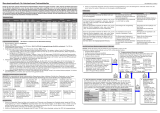 Reely 1460688 Bedienungsanleitung
Reely 1460688 Bedienungsanleitung
-
E-flite EFL011500 Bedienungsanleitung
-
Modster Husky Bedienungsanleitung
-
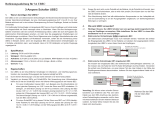 Reely 1460796 Bedienungsanleitung
Reely 1460796 Bedienungsanleitung
-
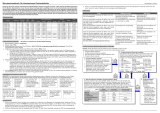 Reely 1460686 Bedienungsanleitung
Reely 1460686 Bedienungsanleitung
-
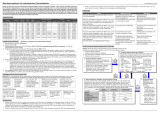 Reely 1460683 Bedienungsanleitung
Reely 1460683 Bedienungsanleitung
-
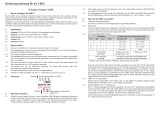 Reely 1460794 Bedienungsanleitung
Reely 1460794 Bedienungsanleitung
-
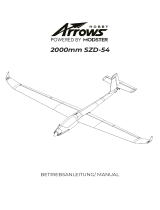 Arrows AH017P Benutzerhandbuch
Arrows AH017P Benutzerhandbuch
-
Conrad 1460794 Benutzerhandbuch
-
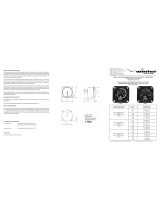 Winter 7 FMS 4 Installation And Maintenance Instructions
Winter 7 FMS 4 Installation And Maintenance Instructions


























































